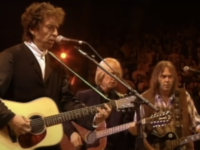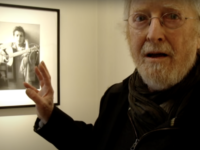Bob Dylan succeeded on Shadows in the Night by being Bob Dylan. He gave us an album of songbook-era songs, but no big band. A Frank Sinatra tribute, with none of his most familiar songs. A promise of jazz, with Americana instead.
Issued in February 2015, Shadows in the Night was – at its foundation – what every great Bob Dylan album has always aspired to, and many of his worst have been sunk by: The opposite of what you thought it would be. Dylan’s willingness to frustrate our desires, to know exactly what is anticipated and to do something else entirely, has made him the most interesting rock star there ever was. Also, the most confounding.
And so, we had Shadows in the Night, a nod to a style of songwriting that it once seemed Dylan himself had rendered obsolete. Singing in a quiet, country coo, he couldn’t resemble less the silky-smooth crooners who once made these lines come alive. It was also played with a gentle genius by a rootsy group of first-take collaborators more prone to melancholy turns on pedal steel than string-laden swoons.
Put another way, Shadows in the Night had far more in common with Willie Nelson’s Stardust than it ever will with Frank Sinatra’s Come Fly With Me. It shouldn’t have worked, and not just because Willie Nelson’s triumph was so definitive.
It shouldn’t have worked because the principal thing that’s always made Bob Dylan so galvanizing has been his fury. There’s a reason albums like Blonde on Blonde and Blood on the Tracks continue to resonate: Because few can put into a few serrated words so much bristling anger. He was always at his best when completely pissed.
And yet, Shadows in the Night somehow succeeded anyway, largely because of that same steely resiliency. Bob Dylan once again refused to yield to our expectations, showing a strength of resolve in an entirely more delicate manner, and in so doing created something as surprising as it was charming. We’d rarely heard him quite like this before, neither this vulnerable nor this exposed.
In the end, then, Shadows in the Night was no tribute to Frank Sinatra, at all – but instead one to a figure who has never, ever stopped moving forward. Even when it appears he’s looking back. In fact, singing someone else’s words seemed to bring out still another side of Bob Dylan, and pushed his own craft forward in a way that was entirely in keeping (believe it or not) with a career propelled by such gutsy moves.
- ‘Together Through Life’ Remains One of Bob Dylan’s Most Low Key, Organic LPs - April 15, 2024
- Why Joe Jackson’s Retro ‘Body and Soul’ Said So Much About His Future - March 14, 2024
- How Rudolph Stole the Show on ‘The Temptations Christmas Card’ - December 25, 2023




